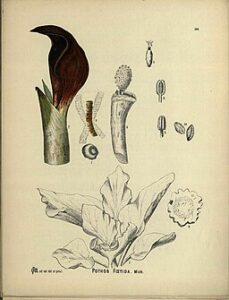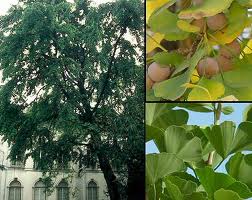10 Medicinal Plants Native Americans Used To Treat Everything
Throughout history, Native American tribes have demonstrated an intricate knowledge of medicinal plants. Rooted deep in their culture, these plants have been used for a plethora of health reasons – from treating wounds to combating diseases. This article delves deep into 10 vital medicinal plants historically utilized by Native American tribes, discussing their traditional uses, scientific evidence, and other significant insights.
1. Echinacea (Echinacea purpurea)
Overview: Native to the vast stretches of the Great Plains, Echinacea is a bright purple flower recognized for its potent medicinal qualities.
Traditional Use: Many Native American tribes valued Echinacea for its ability to stimulate the immune system, making it a go-to remedy for infections.
Modern Research: Modern studies have revealed Echinacea’s potential to not only boost immunity but also reduce the duration and severity of cold symptoms[1]. However, it’s essential to note that while many people benefit from Echinacea, some might experience side effects like rashes or a worsening of asthma symptoms.
2. White Sage (Salvia apiana)
Overview: Found predominantly in California and Baja California, this plant has a spiritual essence tied closely to Native American ceremonies.
Traditional Use: While sacred in various rituals, white sage was also a remedy for respiratory problems, including colds and sore throats.
Modern Research: Recent studies hint at white sage’s antimicrobial and anti-inflammatory properties, making it beneficial in battling infections[2].
3. Yarrow (Achillea millefolium)
Overview: With delicate white flowers, yarrow is both aesthetically pleasing and therapeutically effective.
Traditional Use: Historically used by tribes, especially the Navajo, yarrow was applied to wounds to halt bleeding and promote healing. Additionally, it was consumed orally to ease inflammation in the digestive tract.
Modern Research: While its wound-healing prowess is widely accepted, other claims, like its use for headaches or fevers, await further scientific validation[3].
4. Black Cohosh (Actaea racemosa)
Overview: This tall perennial plant, native to the eastern United States, has been used medicinally for centuries.
Traditional Use: Native Americans used black cohosh to treat a spectrum of ailments, from musculoskeletal pain and fever to menstrual irregularities.
Modern Research: Recent studies indicate that black cohosh might exhibit estrogen-like effects, potentially offering relief from menopausal symptoms[4]. However, there’s an ongoing debate about its safety, especially concerning liver health.
5. Bearberry (Arctostaphylos uva-ursi)
Overview: This low-growing evergreen shrub is recognized for its thick red berries and glossy leaves.
Traditional Use: Known also as kinnikinnick, the leaves of this plant were brewed into a tea by Native Americans to combat urinary tract infections.
Modern Research: Beyond its traditional use, bearberry has been found to have antimicrobial properties, making it a potential ally against various infections[5].
6. Mugwort (Artemisia vulgaris)
Overview: This aromatic plant, with its dark green leaves and purplish stems, has been a part of ancient medicinal practices.
Traditional Use: Mugwort was revered for its ability to address digestive disorders and menstrual irregularities among Native Americans.
Modern Research: While it’s considered beneficial for anxiety and sleep quality, comprehensive research is still needed to solidify these claims[6].
7. Devil’s Club (Oplopanax horridus)
Overview: Recognizable by its large maple-like leaves and spiny stems, this plant is native to the Pacific Northwest.
Traditional Use: It was predominantly used as a remedy for arthritis and general pain relief.
Modern Research: Some studies suggest that Devil’s club has anti-inflammatory and analgesic properties, holding promise for future pharmaceutical applications[7].
8. Red Root (Ceanothus americanus)
Overview: This deciduous shrub, with its clusters of white flowers, has been a staple in traditional medicine.
Traditional Use: From respiratory and digestive disorders to toothaches, red root has been a go-to remedy.
Modern Research: Some recent studies spotlight its potential in inhibiting certain cancer cell growth[8], marking it as a plant of significant interest.
9. Sweetgrass (Hierochloe odorata)
Overview: This aromatic herb is traditionally used in basket weaving and medicinal applications.
Traditional Use: Beyond its reputation for attracting positive energies, Native Americans used sweetgrass in treating eye infections and colds.
Modern Research: Preliminary research supports its antimicrobial properties, though more studies are needed to validate other traditional uses[9].
10. Wild Bergamot (Monarda fistulosa)
Overview: With its vibrant lavender flowers, wild bergamot is a plant of beauty and utility.
Traditional Use: Tribes such as the Ojibwe utilized it for colds, fevers, and digestive issues. It was also considered a remedy for headaches and eye problems.
Modern Research: Modern science confirms that wild bergamot contains compounds with potent antimicrobial and antioxidant properties[10].
Embracing Nature’s Pharmacy
The vast knowledge of Native American tribes, encapsulated in their usage of these medicinal plants, offers a wealth of insights. Embracing and expanding upon this knowledge can pave the way for innovative health solutions, blending the wisdom of the past with the scientific rigor of the present.














